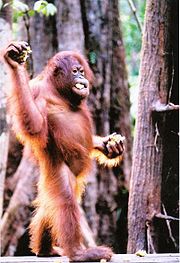

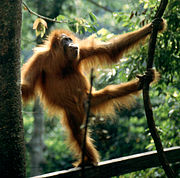



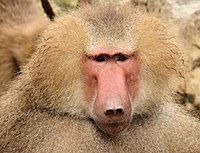
Orangutan
Sumatra
|
 |
 |
 |
 |
 |
 |
 |
Orangutan
Animation Designed and Created by Winry
Marini © 2007 |
|
Donate Orangutan |
Menyelamatkan Lingkungan
mulai dari Halaman Rumah. Terakhir pada tahun 1980 kami pindah ke rumah baru di komplek Meranti dekat American School, waktu membangun sepuluh rumah di komplek Meranti tersebut, top soil dikupas, rumah dibangun kemudian halaman di beri lapisan tanah hitam dan ditanam rumput. Kalau rumput kita pacul untuk menanam bunga misalnya, maka langsung kena tanah liat bercampur pasir karena tebal tanah hitam kurang dari dua cm. Tanah liat campur pasir tersebut sangat keras dan tidak mengandung humus sehingga membuat tanaman merana, hidup segan mati tak mau, kerdil dan susah tumbuh. Untung disekitar perumahan terdapat sisa hutan yang memang sengaja dilestarikan yang merupakan salah satu keunikan dan daya tarik untuk tinggal di Rumbai Camp. Hampir tiap hari saya dan tukang kebun mengambil humus dan tanah hitam di hutan tersebut dan belakangan perusahaan menyediakan top soil bagi penghuni rumah yang membutuhkannya. Untuk menanam pohon, mula-mula kita gali lubang dengan lebar, panjang dan dalam sesuai kebutuhan, tanah liat dan pasir disingkirkan, lalu lubang diisi dengan tanah hitam yang sudah dicampur dengan pupuk kandang ayam. Yang paling berat adalah menggali lubang karena tanah liat sangat keras, apalagi kalau ukuran lubangnya agak besar misalnya untuk menanam pohon kelapa. Dihalaman rumah kami ada pohon kedondong, kelapa, durian, aneka jambu air, mangga, sawo kecik, pohon buni, jambu kemang, keramunting, pinang merah, pohon salam, jeruk sambal, jeruk purut, manggis, srikaya, delima, dadap, lamtoro, asam jawa, kelapa sawit dll. Selain asri, pohon tadi menjadi tempat singgah macam-macam burung, kera, lutung dan beruk. Bermacam-macam pohon tadi juga berguna sebagai contoh buat anak-anak kami serta kawan-kawan yang datang berkunjung. Anak bungsu kami Winry Marini lahir setahun setelah kami menempati rumah ini. Nampaknya Winry yang paling terkesan dengan suasana di Rumbai dan menikmati keberadaan pohon-pohon dan tanaman baik di halaman rumah maupun di hutan disekitar camp atau komplek perumahan karyawan. Tanaman yang paling
unik adalah
jambu
kemang, bibit jambu kemang berupa biji dibawa oleh alm Mak
saya dari
Mentok Bangka,
kota
kelahiran
saya,
tanaman ini termasuk langka karena setahu saya hanya ada di pulau Bangka.
Batang, daun dan bunganya mirip jambu bol, tapi
buahnya berbentuk botol dan lebih besar daripada jambu bol, kalau sudah
masak putih warnanya. Batangnya relative lebih tinggi dan lebih besar,
waktu masih di kampung biasanya kami mencari buah jambu yang jatuh
dari pohon, rasa buahnya asam-asam manis, dicocol pakai kecap, hmmm
ba titiak
air
liur,
ngiler
dan pengen jadinya.
Awal Juli 2004 saya memasuki masa
pensiun setelah bekerja hampir 30 tahun di Caltex dan tepat pada tanggal
1 Juli 2004 kami pindah ke Jakarta dan
tinggal di daerah Tebet Jakarta Selatan. Alhamdulillah, banyak manfaat kebun mini kami, kupu kupu dan belalang
berkunjung, bertelur dan berkembang biak, burung penghisap madu
dan kutilang datang
pada waktu jambu berbunga, kampret atau kelelawar mampir kalau ada buah
sawo atau jambu masak, dan hampir setiap hari ada burung kutilang atau
perinjak mampir berteduh sambil mencari ulat, bahkan di pohon namnam
ada bunglon yang menginap sejak masih kecil sampai menjelang
dewasa saat ini. |
Jalur Hijau Tebet Iklan banner kontes blog sahabat orangutan dapat dilihat disini. Beruk Semundi 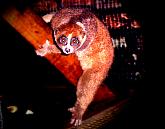 source fotograher.net Keterangan: Satwa sejenis kera yang terdapat di hutan Pulau Bangka, Provinsi Bangka Belitung. Hijaukan Bumi 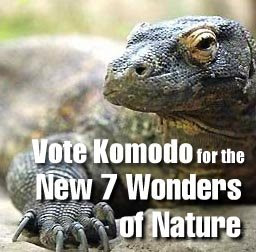 Cara memberikan Voting untuk Komodo |
Tebet Business Directory click
here
Free Posting IKLAN GRATIS, send your name, address, telephone, email id, website and brief description of your business to AdminTebetbarat.com |
 |
 |
 |
 |
WIKIPEDIA The orangutans are a species of great apes. Known for their intelligence,
they live in trees and they are the largest living arboreal animal. They
have longer arms than other great apes, and their hair is typically reddish-brown,
instead of the brown or black hair typical of other great apes; a new
black-haired subspecies was recently discovered on Borneo by primatologist
Birute Galdikas. Native to Indonesia and Malaysia, they are currently
found only in rainforests on the islands of Borneo and Sumatra, though
fossils have been found in Java, the Thai-Malay Peninsula, Vietnam and
China. There are only two surviving species in the genus Pongo and the
subfamily Ponginae (which also includes the extinct genera Gigantopithecus
and Sivapithecus). The word was first attested in English in 1691 in the form orang-outang, and variants with -ng instead of -n as in the Malay original are found in many languages. This spelling (and pronunciation) has remained in use in English up to the present, but has come to be regarded as incorrect. The name of the genus, Pongo, comes from a 16th century account by Andrew Battell, an English sailor held prisoner by the Portuguese in Angola, which describes two anthropoid "monsters" named Pongo and Engeco. It is now believed that he was describing gorillas, but in the late 18th century it was believed that all great apes were orangutans; hence Lacépède's use of Pongo for the genus Ecology and appearance The arms of orangutans are twice as long as their legs. Much of the arm's length has to do with the length of the radius and the ulna rather than the humerus. Their fingers and toes are curved, allowing them to better grip onto branches. Orangutans have less restriction in the movements of their legs than humans and other primates, due to the lack of a hip joint ligament which keeps the femur held into the pelvis. Unlike gorillas and chimpanzees, orangutans are not true knuckle-walkers, and walk on the ground by shuffling on their palms with their fingers curved inwards. Diet Orangutans are highly opportunistic foragers with the composition of their diet varying markedly from month to month. Bark as a source of nourishment is only consumed as a last resort in times of food scarcity, fruits always being the preferred choice. Orangutans are thought to be the sole fruit disperser for some plant species including the climber species Strychnos ignatii which contains the toxic alkaloid strychnine.It does not appear to have any effect on orangutans except for excessive saliva production. Geophagy, the practice of eating soil or rock, has been observed in orangutans. There are three main reasons for this dietary behavior; for the addition of minerals nutrients to their diet; for the ingestion of clay minerals that can absorb toxic substances; or to treat a disorder such as diarrhea. Orangutans use plants of the genus Commelina as an anti-inflammatory balm Behaviour and language According to recent research psychologist Robert Deaner and his colleagues, orangutans are the world's most intelligent animal other than humans, with higher learning and problem solving ability than chimpanzees, which were previously considered to have greater abilities. A study of orangutans by Carel van Schaik, a Dutch primatologist at Duke University, found them capable of tasks well beyond chimpanzees’ abilities — such as using leaves to make rain hats and leakproof roofs over their sleeping nests. He also found that, in some food-rich areas, the creatures had developed a complex culture in which adults would teach youngsters how to make tools and find food. A two year study of orangutan symbolic capability was conducted from 1973-1975 by Gary L. Shapiro with Aazk, a juvenile female orangutan at the Fresno City Zoo (now Chaffee Zoo) in Fresno, California. The study employed the techniques of David Premack who used plastic tokens to teach the chimpanzee, Sarah, linguistic skills. Shapiro continued to examine the linguistic and learning abilities of ex-captive orangutans in Tanjung Puting National Park, in Indonesian Borneo, between 1978 and 1980. During that time, Shapiro instructed ex-captive orangutans in the acquisition and use of signs following the techniques of R. Allen and Beatrix Gardner who taught the chimpanzee, Washoe, in the late-1960s. In the only signing study ever conducted in a great ape's natural environment, Shapiro home-reared Princess, a juvenile female who learned nearly 40 signs (according to the criteria of sign acquisition used by Francine Patterson with Koko, the gorilla) and trained Rinnie, a free-ranging adult female orangutan who learned nearly 30 signs over a two year period. For his dissertation study, Shapiro examined the factors influencing sign learning by four juvenile orangutans over a 15-month period. The first orangutan language study program, directed by Dr. Francine Neago, was listed by Encyclopedia Britannica in 1988. The Orangutan language project at the Smithsonian National Zoo in Washington, D.C., uses a computer system originally developed at UCLA by Neago in conjunction with IBM. Zoo Atlanta has a touch screen computer where their two Sumatran Orangutans play games. Scientists hope that the data they collect from this will help researchers learn about socializing patterns, such as whether they mimic others or learn behavior from trial and error, and hope the data can point to new conservation strategies. A 2008 study of two orangutans at the Leipzig Zoo showed that orangutans are the first non-human species documented to use 'calculated reciprocity' which involves weighing the costs and benefits of gift exchanges and keeping track of these over time. Although orangutans are generally passive, aggression toward other orangutans is very common; they are solitary animals and can be fiercely territorial. Immature males will try to mate with any female, and may succeed in forcibly copulating with her if she is also immature and not strong enough to fend him off. Mature females easily fend off their immature suitors, preferring to mate with a mature male. Orangutans usually do not swim, however they can be taught to swim and at least one population at a conservation refuge on Kaja island in Borneo have taught themselves to swim. Orangutans have even shown laughter-like vocalizations in response to physical contact, such as wrestling, play chasing, or tickling. Species The populations on the two islands were classified as subspecies until recently, when they were elevated to full specific level, and the three distinct populations on Borneo were elevated to subspecies. The population currently listed as P. p. wurmbii may be closer to the Sumatran Orangutan than the Bornean Orangutan. If confirmed, abelii would be a subspecies of P. wurmbii (Tiedeman, 1808). Regardless, the type locality of pygmaeus has not been established beyond doubts, and may be from the population currently listed as wurmbii (in which case wurmbii would be a junior synonym of pygmaeus, while one of the names currently considered a junior synonym of pygmaeus would take precedence for the northwest Bornean taxon).[21] To further confuse, the name morio, as well as various junior synonyms that have been suggested,[1] have been considered likely to all be junior synonyms of the population listed as pygmaeus in the above, thus leaving the east Bornean populations unnamed. In addition, a fossil species, P. hooijeri, is known from Vietnam, and multiple fossil subspecies have been described from several parts of southeastern Asia. It is unclear if these belong to P. pygmaeus or P. abeli or, in fact, represent distinct species. Conservation status The Sumatran species is critically endangered and the Bornean species of orangutans is endangered according to the IUCN Red List of mammals, and both are listed on Appendix I of CITES. The total number of Bornean orangutans is estimated to be less than 14% of what it was in the recent past (from around 10,000 years ago until the middle of the twentieth century) and this sharp decline has occurred mostly over the past few decades due to human activities and development. Species distribution is now highly patchy throughout Borneo: it is apparently absent or uncommon in the south-east of the island, as well as in the forests between the Rejang River in central Sarawak and the Padas River in western Sabah (including the Sultanate of Brunei). The largest remaining population is found in the forest around the Sabangau River, but this environment is at risk. A similar development have been observed for the Sumatran orangutans. The most recent estimate for the Sumatran Orangutan is around 7,300 individuals in the wild while the Bornean Orangutan population is estimated at between 45,000 and 69,000. These estimates were obtained between 2000 and 2003. Since recent trends are steeply down in most places due to logging and burning, it is forecast that the current numbers are below these figures. Orangutan habitat destruction due to logging, mining and forest fires, as well as fragmentation by roads, has been increasing rapidly in the last decade. A major factor in that period of time has been the conversion of vast areas of tropical forest to oil palm plantations in response to international demand (the palm oil is used for cooking, cosmetics, mechanics, and more recently as source of biodiesel). Some UN scientists believe that these plantations could lead to the extinction of the species by the year 2012. Some of this activity is illegal, occurring in national parks that are officially off limits to loggers, miners and plantation development. There is also a major problem with hunting and illegal pet trade. In early 2004 about 100 individuals of Bornean origin were confiscated in Thailand and 50 of them were returned to Kalimantan in 2006. Several hundred Bornean orangutan orphans who were confiscated by local authorities have been entrusted to different orphanages in both Malaysia and Indonesia. They are in the process of being rehabilitated into the wild. Major conservation centres in Indonesia include those at Tanjung Puting National Park and Sebangau National Park in Central Kalimantan, Kutai in East Kalimantan, Gunung Palung National Park in West Kalimantan, and Bukit Lawang in the Gunung Leuser National Park on the border of Aceh and North Sumatra. In Malaysia, conservation areas include Semenggoh Wildlife Centre in Sarawak and Matang Wildlife Centre also in Sarawak, and the Sepilok Orang Utan Sanctuary near Sandakan in Sabah. The Orang-outang is largly endangered from industrys taking down their
habitat. |
 |
 |
 |
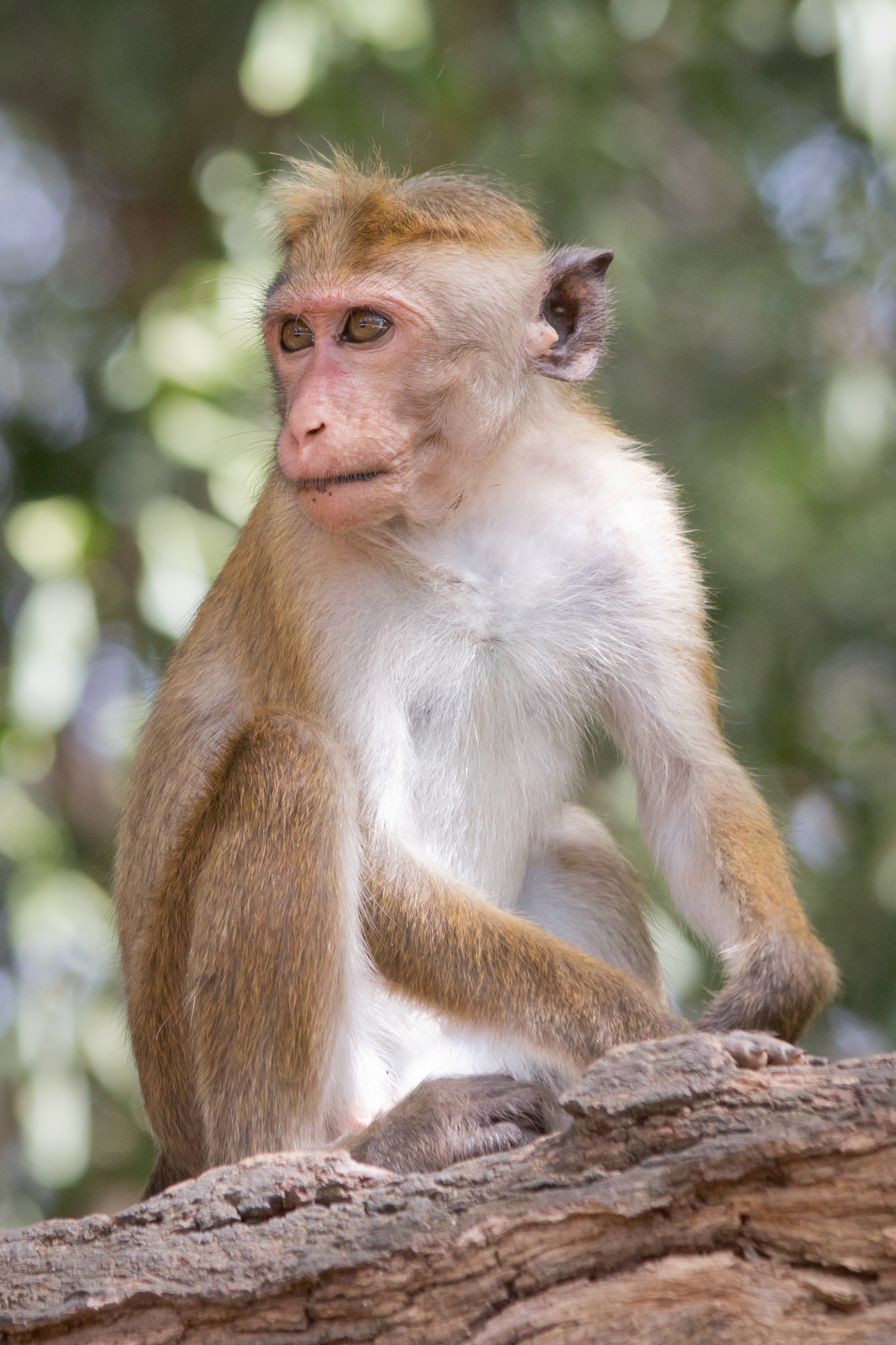 |
Monkey
From Wikipedia, the free encyclopedia (Redirected from Monkey (animal)) A monkey is any cercopithecoid (Old World monkey) or platyrrhine (New World monkey) primate. All primates that are not prosimians (lemurs and tarsiers) or apes are monkeys. The 264 known extant monkey species represent two of the three groupings of simian primates (the third group being the 21 species of apes). Monkeys are usually smaller and/or longer-tailed than apes. The New World monkeys are classified within the parvorder Platyrrhini, whereas the Old World monkeys (superfamily Cercopithecoidea) form part of the parvorder Catarrhini, which also includes the apes. Thus, scientifically speaking, monkeys are paraphyletic (not a single coherent group), and Old World monkeys are actually more closely related to the apes than they are to the New World monkeys. Due to its size (up to 1 m/3 ft)
the Mandrill is often thought to be an ape, but it is actually an Old
World monkey. Also, a few monkey species
have the word "ape" in their common name. Monkeys range in size from the Pygmy Marmoset, at 140 to 160 millimetres (5-6 in) long (plus tail) and 120 to 140 grams (4-5 oz) in weight, to the male Mandrill, almost 1 metre (3.3 ft) long and weighing 35 kilograms (77 lb). Some are arboreal (living in trees) while others live on the savanna; diets differ among the various species but may contain any of the following: fruit, leaves, seeds, nuts, flowers, eggs, and small animals (including insects and spiders). Some characteristics are shared among the groups; most New World monkeys have prehensile tails while Old World monkeys have non-prehensile tails or no visible tail at all. Some have trichromatic color vision like that of humans, others are dichromats or monochromats. Although both the New and Old World monkeys, like the apes, have forward facing eyes, the faces of Old World and New World monkeys look very different, though again, each group shares some features such as the types of noses, cheeks, and rumps Etymology A group of monkeys may be referred to as a mission or a tribe. Relationship with humans In religion and culture, the monkey often represents quick-wittedness and mischief. As service animals for the disabled Some organizations train capuchin monkeys as monkey helpers to assist quadriplegics and other people with severe spinal cord injuries or mobility impairments. After being socialized in a human home as infants, the monkeys undergo extensive training before being placed with a quadriplegic. Around the house, the monkeys help out by doing tasks including microwaving food, washing the quadriplegic's face, and opening drink bottles. In experiments Macaques, especially the Rhesus Macaque, and African Green Monkeys are
widely used in animal testing facilities, either wild-caught or purpose-bred.
They are used primarily because of their relative ease of handling, their
fast reproductive cycle (compared to apes), and their psychological and
physical similarity to humans. In the United States, around 50,000 non-human
primates, most of them monkeys, have been used in experiments every year
since 1973; 10,000 monkeys were used in the European Union in 2004. The use of monkeys in laboratories is controversial. Some claim[who?] that their use is cruel and produces little information of value, and there have been many protests, vandalism to testing facilities, and threats to workers. Others claim[who?] that it has led to many important medical breakthroughs such as the rabies vaccine, understanding of human reproduction and basic knowledge about brain function, and that the prevention of harm to humans should be a higher priority than the possible harm done to monkeys. The topic has become a popular cause for animal rights and animal welfare groups. In space |
 |
 |
 |
Siamang
From Wikipedia, the free encyclopedia The Siamang (Symphalangus syndactylus) is a tailless, arboreal, black furred gibbon native to the forests of Malaysia, Thailand, and Sumatra. The largest of the lesser apes, the Siamang can be twice the size of other gibbons, reaching 1 m in height, and weighing up to 14 kg. The Siamang is the only species in the genus Symphalangus. The Siamang is distinctive for two reasons. The first is that two fingers on each hand are fused together — hence the name "syndactylus", from the Ancient Greek sun-, "united" + daktulos "finger". The second is the large "gular sac" (found in both male and female of the species), which is a throat pouch that can be inflated to the size of its head, allowing the Siamang to make loud resonating calls or songs. There may be two subspecies of the Siamang. If so, they are the nominate Sumatran Siamang (S. s. syndactylus) and the Malaysian Siamang (S. s. continentis, in peninsular Malaysia). Otherwise, the Malaysian individuals are only a population. The Siamang is the only gibbon which occurs sympatrically with other gibbons; its two ranges are entirely within the combined ranges of the Agile Gibbon and the Lar Gibbon. Although the siamang is given a different name than other gibbons, this division is not cladistically sound, since the genus Nomascus split from the rest of the gibbons before Symphalangus split The Siamang can live up to 30+ years in captivity. While the illegal pet trade takes a toll on wild populations,
the principal threat to the Siamang is habitat loss in both Malaysia
and Sumatra. Palm oil production is clearing large swathes of forest,
reducing the habitat of the Siamang, along with that of other species
such as the Sumatran Tiger. The Siamang inhabits the forest remnants of Sumatra Island and the Malay Peninsula, and is widely distributed from lowland forest to montane forest, even a rainforest. And can be found at altitudes of up to 3800 m . The Siamang lives in groups of up to 6 individuals (4 individuals on average) with a home range 23 hectares on average. Their day ranges are substantially smaller than those of sympatric Hylobates species, often less than 1 km. The Siamang's melodious choir singing breaks the forest's silence in the early morning after the Agile Gibbon or Lar Gibbon's calls. The Siamang in Sumatra and the Malay Peninsula are similar in appearance, but there are some differences in behaviour between the two populations. DietThe Siamang mainly eats various parts of plants. The Sumatran Siamang is more frugivorous than its Malayan cousin, with fruit making up to 60% of its diet. The Siamang eats at least 160 species of plants, from vines to woody plants. Its major food is figs (Ficus spp.), a member of Moraceae family.The Siamang prefers to eat ripe fruit rather than unripe fruit, and young leaves rather than old leaves. It eats flowers and a few animals, mostly insects. When the Siamang eats large flowers, it will eat only the corolla (petal), but it will eat all parts of smaller flowers, with the small fruit collected in its hand before being consumed. When it eats big and hard seeds or seeds with sharp edge it will peel out the fruit flesh and throw away the seed. Although its diet consists of substantial portions of fruit, it is the most folivorous of all members of Hylobatidae. As it is also the largest gibbon, and thus fits well with the general primate dietary trend in which larger primates tend to be more folivorous Demography and populationA group of Siamang normally consist of an adult dominant male, an adult dominant female, with offspring, infant and sometimes a sub-adult. The sub-adult usually leaves the group after the age 6 to 8 years; sub-adult females tend to leave the group earlier than sub-adult males. Siamang males tend to offer more paternal care than other members of the family Hylobatidae, taking up a major role in carrying the infant after it is about 8 months old . The infant typically returns to its mother to sleep and nurse. A study in relation to effect of habitat disturbance on the Siamang found that group composition is varied in age-sex structure between intact forest and post-burnt forest. The post-burnt population was more adult and sub-adults than the intact population. Post-burnt groups contain fewer infants, small juveniles and large juveniles compared to intact forest groups. Infant survival rates in post-burnt groups are lower than in intact forests. The number of individuals in intact forests is higher than in post-burnt forests. The Siamang in disturbed forests live in small groups and have a density lower than in intact forests because of lack of food resources and trees for living. In the 1980s, the Indonesian population of the Siamang in the wild was estimated to be 360,000 individuals. This seems over-estimate today, as an example, Bukit Barisan Selatan National Park (BBSNP) is the third largest protected area (3,568 km²) in Sumatra, of which approximately 2,570 km² remains under forest cover inhabit by 22,390 siamangs (in 2002 censuses). According to two different research projects conducted in Sumatra, the Siamang prefer to inhabit lowland forest below between 500 m in altitude and over 1000 m above sea level. Behavior The Siamang tends to rest for more than 50% of its waking period (from dawn to dusk), followed by feeding, moving, foraging and social activities. It takes more rest during midday, taking time to groom each other or play. During resting time it usually uses a branch of a large tree lying on their back or on their stomach. Feeding behaviors, foraging, and moving are most often in the morning and after resting time. In the dry season the length of the Siamang's daily range is longer than in the rainy season. The Siamang in southern Sumatra undertakes less foraging than the Siamang in other places because it eats more fruit and therefore consumes more nutrition, which results in less time needed for looking for food. Sometimes the Siamang will spend all of the day in one big fruiting tree, just moving out when it wants to rest and then coming back again to fruiting trees. Role of calling The Siamang starts its day by calling in the early morning and calls less after midday, with the peak of their calls around 9:00 am to 10:00 am. Most of the Siamang's calls are directed to its neighbours rather than to inside its home range. This means that the Siamang's calling is in response to disturbances and is to defend its territory. Calls in the late morning typically happen when it meets or sees another Siamang group. The edge of the Siamang's home range, which may overlap another, is often the places where calling is made. Counter-call (co-response calling) occasionally happens near the border or in the overlap area. Calls are numerous when fruit is more abundant rather than when fruit is less available. Branch shaking, swinging, and moving around the tree crowns accompany the calling. This movement might be to show the other groups where they are. The Siamang prefers calling in the living, high and big trees, it might be the places where another group is easy to see. Beside that, living, big, and tall trees can support Siamang movement. Calling trees are usually near feeding trees but sometimes they call in the feeding trees. Siamang and their habitatAs a frugivorous animal, the Siamang disperses seeds through defacation as it travels across its territory. The Siamang can carry seed and defecate over 300 m with the shortest distance being 47.6 m from the seed resource, which supports the forest regeneration and succession. Threats to populationThe Siamang, as an arboreal primate, absolutely depends on the forest for existence, needing trees for its living. At the moment, the Siamang is facing a population decrease due to habitat loss, poaching and hunting. Habitat loss A major threat to the Siamang is habitat loss due to plantation, forest fire, illegal logging, encroachment, and human development. Firstly, palm oil plantations have removed large areas of the Siamang's habitat in the last four decades. Since 2002 107,000 square kilometres of palm oil have been planted, which has replaced much rainforest in Indonesia and Malaysia, where the Siamang originally used to live. Secondly, in the last two decades, forest fire destroyed more than 20,000 km² of Sumatran rainforest, mainly in the lowland area where most of the Siamang live. Thirdly, the rate of illegal logging in Indonesia increased from 1980 to 1995 and even more rapidly after the reformation era beginning in 1998. These illegal activities devastated the remaining tropical rainforest especially in Sumatra. Fourthly, forest encroachments change forest cover into cultivated land, for example; the rising price of coffee in 1998 has been encouraging people in Sumatra to replace the forest with coffee plantation. Fifthly, development in many areas needs infrastructure such as roads, which now divide a lot of conservation areas have been caused forest fragmentation and edge effects. Unfortunately, the Siamang as an arboreal primate faces difficulty because road establishment has disconnected their pathways. Poaching and huntingUnlike other parts of Asia, primates are not hunted for their meat in Indonesia (the exception is in Chinese restaurants in Indonesia which sometimes serve macaque on their menu). However, they are poached and hunted for the illegal pet trade, mostly for infant Siamang. Poachers kill the mothers because mother Siamang are highly protective of their infants. It is therefore very difficult to remove the infant without first killing the mother. Despite the fact that most Siamang on the market are infants many infants nevertheless die during transportation.
|